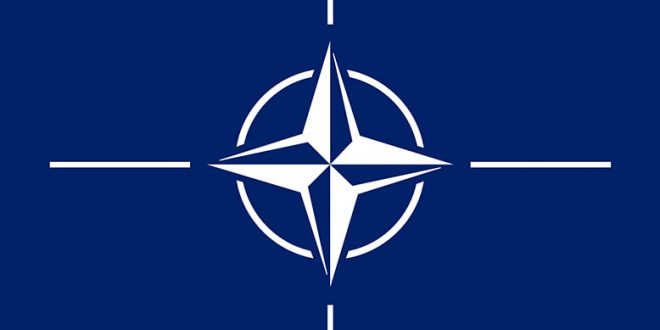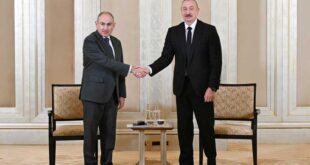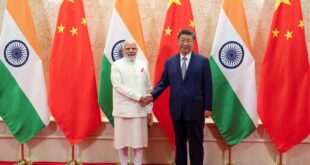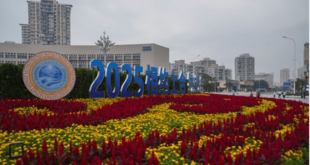From its inception to the present, Nato has been intent on pursuing a policy of aggression. Jonathan Maunders explains
‘Keep the Russians out, the Americans in, and the Germans down’ – those were the words of Nato’s first Secretary General, Lord Ismay, when explaining the aims behind the new military alliance (as it was then). Simple rhetoric it may well be, but Ismay’s words seem to be of haunting significance in the world we inhabit more than half a century later.
As Nato further escalates tensions with Russia, sending more troops to Eastern Europe and raising the spectre of a no-fly-zone in Syria, Ismay’s words seem clearer and more deliberate, particularly when you factor in the likely election of Hilary Clinton, seemingly fixated on all-out war with Putin. However, before we can really explain here and now, we must first understand Nato’s history.
Beginnings
The initial beginnings of what we now refer to as Nato can be traced back to the Treaty of Brussels of 1948 where four of Europe’s foremost colonial powers, Belgium, France, the Netherlands and the UK, agreed upon a mutual defence clause. We think of Nato as intrinsically US-led but this early ancestor of the treaty was notable for its absence of the US. These European powers would soon form the Western European Defence Organisation, a loose military organisation that goes further in resembling Nato as it has become.
However, economically and military ravaged by the Second World War, these European powers soon became convinced that it was essential that they got the United States on board to provide protection and clout.This further shows that contrary to the Nato of today, it was the European nations that were desperate to bring in the US, not vice versa. An agreement with the US was quickly formulated and the North Atlantic Treaty was signed in April 1949.
As well as adding the US, this treaty added Canada, Portugal, Italy, Norway, Denmark and Iceland. While the signature of this agreement was popular amongst the populations of many of the signatories, riots broke out outside the Iceland parliament, with the Icelandic population keen to maintain a policy of neutrality.
Articles
Many of the articles of the North Atlantic Treaty are relatively well known, however, there has been much in the way of misinformation. The articles can be largely boiled down to three significant ones. Firstly, Article 1 denotes that the Treaty organisation aims to solve international disputes peacefully, an interesting development given the aggressive organisation that Nato was to become. Article 4 asserts that the organisation must provide consultation if the territorial integrity, political independence or security of a member nation is threatened. While this article is less well known than its successor, it has been invoked three times by Turkey alone. Article 5, by far the most famous, commits each signatory to consider an armed attack on one member as an attack on all members. This stipulation was of course controversially invoked by the US in the immediate aftermath of 9/11.
Structure
The internal structures of Nato have largely remained the same since its inception, with the majority of the organisation’s power running through two positions. The first of these of positions is that of Secretary General (where our old friend Lord Ismay comes in). This position is currently filled by former Norwegian Prime Minister, Jens Stoltenburg and is very much the diplomatic arm of the organisation. This position has always been filled by a European and it is clear that this is by design. The powers behind Nato are aware of the ‘interfering American’ reputation and thus have always felt that a European is best placed to achieve Nato’s diplomatic aims.
The second position is that of Supreme Allied Commander Europe. Interestingly, this position is always filled by an American and, again, this is fundamentally by design. Not only is the person in this position, currently Curtis Scaparroti, in charge of Nato’s forces, he is also commander of US forces in Europe. This may seem like a technicality, but in practice it means that Scaparotti is simultaneously directly answerable to both Nato’s Secretary General and also the US president, just illustrating the power the US has at the heart of the organisation.
Cold War
It was the Korean War that would come to impress upon the US the potential strength of utilising the military alliance. In the eyes of the US administration, the fact that the North Korean effort was being aided by both China and the Soviet Union raised the threat of communist countries working together against US interests. Alarmed by this scenario, a newly convinced US led Nato to developing their first substantial military plans.
Despite growing tensions between the West and the Soviet Union, the latter actually suggested it join Nato in 1954, only to be rejected by the organisation’s signatories. While you’d be right in thinking there was a chasm between west and east, this in fact shows that the Soviet Union was at least prepared for political dialogue, but its rivals weren’t.
Not just content with quashing the Soviet Union’s suggestion, Nato would approve the MC48 document in December 1954, a further escalation in tensions. The document asserted that the Nato allies would have to use atomic weapons in a war with the Soviet Union, even if the latter had no intention of using them first. This may not be a surprise but it is important to stress the last clause of that document’s message. The fact that Nato allies were willing to use atomic weapons to annihilate a rival country even if that country was not willing to use them themselves, just illustrates how an alliance formed under the guise of preserving peace was instead pursuing a dangerous policy of aggression and hostility.
The following summer, West Germany joined the alliance, allowing Nato to utilise its significant manpower and to push the organisation’s border right up against the East. The Kremlin responded by initiating the Warsaw Pact, an alliance between the Soviet Union, Hungary, Czechoslovakia, Poland, Bulgaria, Romania, Albania, and East Germany, defining the two sides of the Cold War for the first time.
As both sides built up their nuclear arsenal in the decades that followed, the spectre of nuclear war haunted the continent and despite France withdrawing from Nato’s military front, the organisation continued to expand its influence and its weapon capabilities.
When the Berlin Wall fell and the Soviet Union collapsed, Nato was keen to assert its validation for its policy of aggression and hostility. It soon made a deal with the last Soviet premier, Mikhail Gorbachev to bring the newly unified Germany under Nato’s alliance. As part of this deal, Nato powers promised Gorbachev that in return they would not expand the alliance further into former Warsaw Pact Nations, a promise they would soon break.
Yugoslavia
As an organisation fundamentally defined by the Cold War, Nato was left struggling to find its purpose in a post-Cold War world. It soon found this purpose during the protracted collapse of Yugoslavia.
Deterioration in Bosnia led the United Nations to ask Nato to enforce a no-fly-zone over Bosnia and Herzegovina, which started in April 1993. After downing 4 Serbian planes and an escalation in the war, the UN’s military commander was given power to call for Nato airstrikes without seeking consultation with UN officials. This soon led to Nato launching widespread airstrikes in the area.
Later in the decade, after a breakdown of talks between US special envoy Richard Holbrooke and Slobodan Milosevic, the former handed the matter to Nato, who began a savage 78 day bombing campaign on Serbian targets. This operation, known as Operation Allied Force, became known for its high civilian casualties, with hundreds of civilians slaughtered by western airstrikes in 1999. This can be seen as the first example of Nato’s normalisation of civilian casualties, with the organisation keen to normalise the idea that high civilian casualties could be a necessary evil to promote peace, a morally bankrupt approach that would later haunt Afghanistan and Libya.
It has later been revealed that as part of Nato airstrikes, passenger trains were hit, Albanian refugee movements were repeatedly bombed, hospitals were struck with cluster bombs and bridges were destroyed with civilians desperately crossing.
During this conflict, the US and UK opposed French attempts for the organisation to seek approval from the UN’s Security Council before launching airstrikes, claiming it would undermine the treaty’s authority, further emphasising the organisation’s neglect of democracy and embrace of bloodshed.
Afghanistan
In the aftermath of 9/11, the US invoked Article 5, forcing all Nato signatories to consider the attacks as attacks on all of them. This marked the first time that Nato had markedly expanded outside of its original North Atlantic parameters. This is of particular significance as it allowed the US to use cover of Nato legitimacy to wage its imperialist War on Terror in the region.
Nato was soon asked to take control of the International Security Assistance Force, a force consisting of troops from 42 nations. This force was initially charged with just taking Kabul before having their mission expanded to the whole of Afghanistan.
Nato caused the massacre of tens of thousands of innocent civilians, with 20,000 dying in 2001 alone, statistics that form a haunting spectre over the intervention. While Nato was largely able to portray its intervention in Yugoslavia as a relative success and necessary task, the more the events in Afghanistan became common knowledge, the harder the intervention became to gloss. Influential anti-war groups like Stop the War Coalition were able to spread an anti-war sentiment and alert people to Nato’s massacres.
Libya
In March 2011 the United Nations called a ceasefire in Libya during the Civil War. Nato soon began to enforce a no-fly-zone over the country. It was soon reported that there were tensions within the alliance, deriving from the fact that only Nato nations were taking part in the operation, with a sizeable confrontation between US and German officials. This crack in the alliance reflected the fact that the German government believed Nato had overstepped its mark in intervening in the conflict.
More than just opposition from the German government, thousands marched against the intervention, particularly in response to the high figures of civilian casualties. Nato soon had to defend themselves to suggestions that they had accidentally struck rebel fighters they were supporting. This in itself raised sizeable moral and legal questions regarding Nato’s presence in the nation. People began to question Nato officials whether their primary aim was to protect Libyan civilians or Libyan rebels, a question that in itself reveals the true aim of the intervention.
While clear to many at the time, it has only become clearer that Nato’s intervention in the country was to ensure regime change rather than protect Libyan civilians. This point is further illustrated by the dreadful stories of civilians slaughtered by Nato fire. One of these stories is that of 11 Imams who were killed by Nato airstrikes during a large prayer gathering praying for peace. Similarly, 85 people were killed in a building in the small village of Majer. This effecting story has since become infamous after the words of Lieutenant General Charles Bouchard, commander of the Nato mission, when asked to comment on the deaths, “I cannot believe that 85 civilians were present when we struck but I cannot assure there were none at all.” If any quote could summarise the organisation’s regard to civilian life, it is this one.
The present
Since the collapse of the Warsaw Pact, Nato has broken its promise to Gorbachev and has expanded beyond East Germany into countries such as Hungary, Poland and Estonia. In recent years there have been pushes for Ukraine and Georgia to be admitted into the organisation. The US has been keen to expand Nato’s borders right up against that of Russia, whilst frustrated by Germany’s anxiety on the issue.
With or without Ukraine and Georgia, it is clear that Nato is intent on a policy of aggression. It is stationing more and more troops in former Warsaw Pact countries and has undertaken large scale manoeuvres in the region, in an effort to antagonise the Kremlin. This approach, undertaken under the backdrop of the bloody cauldron that is Syria, means that Nato is playing a dangerous game of chicken with Putin, baiting him to attack a Nato country and thus the whole organisation, initiating global war.
As we look back to Lord Ismay’s quote, it has a harrowing pertinence with regards to the global situation and a treaty organisation defined by its relationship with the US and the latter’s objectives: power, antagonism and conflict. Nato is playing a menacing game of aggression and hostility; a game that no one can win, but everyone can lose.
Written by Jonathan Maunders | Article originally published on CounterFire
 Geostrategic Media Political Commentary, Analysis, Security, Defense
Geostrategic Media Political Commentary, Analysis, Security, Defense





